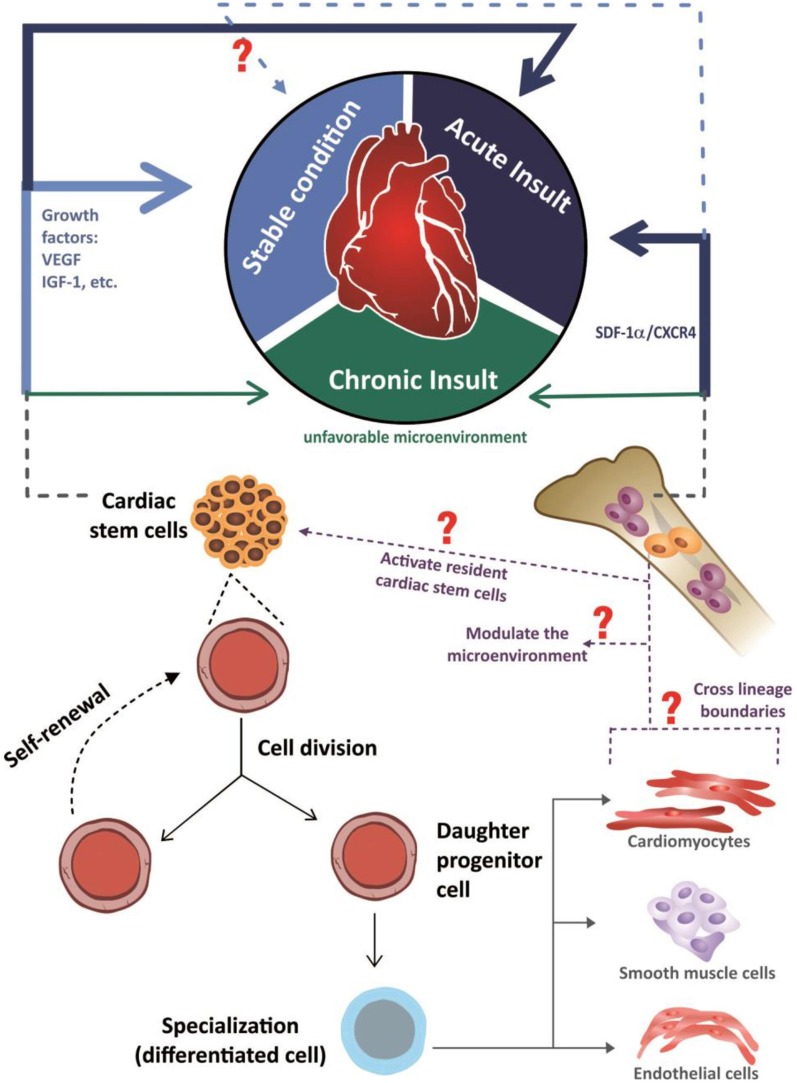Figure 2.
Schematic representation of the mechanisms through which stem cells are involved in both cardiac homeostasis and in the heart repair. In response to acute insult, the damaged myocardium elicits the activation of cardiac and also extracardiac stem cells (represented by the continuous dark blue arrows). The cardiac stem cells are activated in response to growth factors, like VEGF (vascular endothelial growth factor) and IGF-1(insulin-like growth factor 1), while extracardiac stem cells (schematically represented by hematopoietic bone marrow cells) are chemo- attracted into the injured sites through the axis SDF-1α/CXCR4 (stromal-derived factor-1/receptor CXCR4). With the insult chronicity, the participation of cardiac and extracardiac stem cells in the damaged heart is reduced, possibly due to an unfavorable microenvironment to the action of these cells (represented by the continuous dark green arrows). Considering the uninjured heart, in a stable condition, the available information indicates that cardiac homeostasis is ensured by an active role of cardiac stem cells (represented by the continuous light blue arrow), with an unclear role of extracardiac stem cells (represented by light blue dashed arrow). Seeing both acute, chronic and stable conditions, in response to environmental stimuli, cardiac stem cells differentiate into cardiomyocytes, endothelial cells or smooth muscle cells and also, possibly, release soluble autocrine/paracrine factors that play roles in both stem cells self-renewal and myocardial protection/neovascularization respectively, while extra cardiac stem cells are involved in the beneficial modulation of the microenvironment, since the capacity of them to acquire a differentiated phenotype, crossing lineage boundaries, is questionable.

